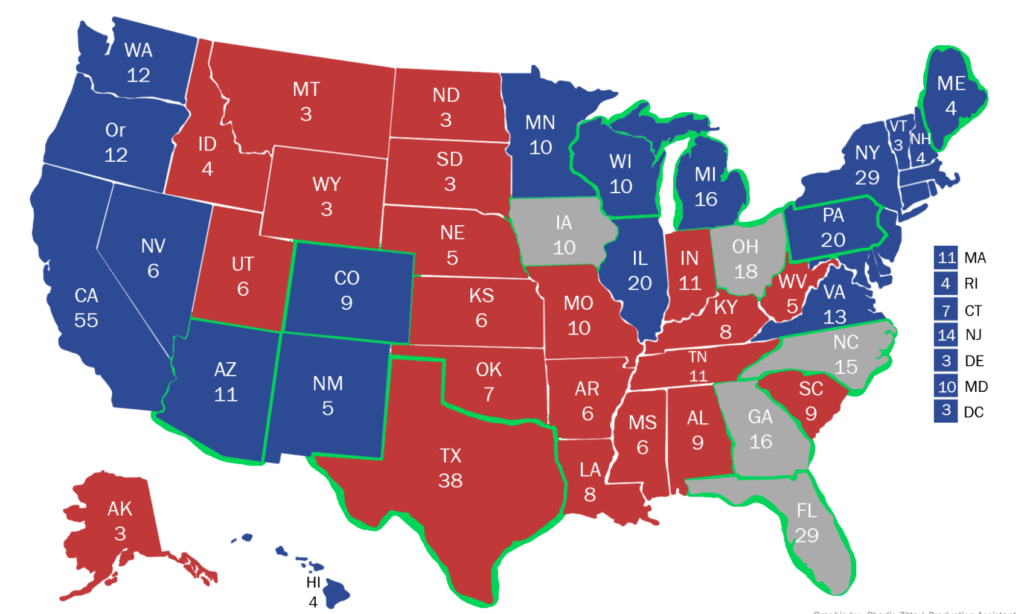
For the past 200 years the electoral college has been the deciding factor in presidential elections.
In the electoral college there are a total of 538 electors and in order to win the election a candidate needs to receive 270 of the 538 potential votes. The number of electors is equal to the total voting membership of the U.S. Congress: 435 representatives, 100 senators and 3 electors from the District of Columbia.
From here each state receives a particular number of electors based on population size. States might gain or lose a few electoral votes based on the results of the census, which is conducted every 10 years, but they will never have less than three as that is the minimum.
To give an example of how the elector votes in each state work, California currently has 55 electors. If the candidate from the Democratic party were to win in this state they would receive all 55 votes. While the candidate from the Republican party would receive zero from this state.
During the election season candidates are typically able to map out or rely on certain states who have a long history of voting for a certain party, these are known as safe states. With these safe state’s candidates are able to predict how many electors votes they will receive. An example of a safe state is Texas, who has voted republican for the past 10 election cycles.
Swing states, on the contrary, are states that can go either way during an election. An example of this is Florida, who has gone back and forth between the Democratic and Republican parties during the past four election cycles.
Usually candidates who receive the highest popular vote also win the electoral college, but that is not always the case.
There have been five instances in U.S. history where the winner of the presidential election lost the popular vote. The most recent time being in 2016 when Hillary Clinton received almost three million more votes than Donald Trump. Trump however won the election by receiving 304 electoral votes.
For years there have been debates on whether the electoral college is still a practical way to hold the election. Some argue that it allows smaller states to be equally represented. Others have pushed to try and get it removed as it does not always represent what the majority want.
Although many attempts have been made none have ever successfully gone through. According to an article by ABC News, the closest Congress came to dismantling the electoral college occurred in the late 1960s-early 1970s, when the House decisively passed an amendment to abolish the system — the only time a chamber of Congress approved such an amendment. But it died in the Senate after being filibustered by a group of lawmakers from southern states.
A more recent attempt to rework the electoral college is the National Popular Vote bill. Which would guarantee the presidency to the candidate who receives the most popular votes across all 50 states and the District of Columbia. At least 16 states, which total to 196 electoral votes, have joined the compact but the bill won’t take effect until the states reach 270 electoral votes.
Experts aren’t sure if the electoral college will remain the same going forward, but the best one can do is be sure to go out and vote for the candidate that you want to represent you.
